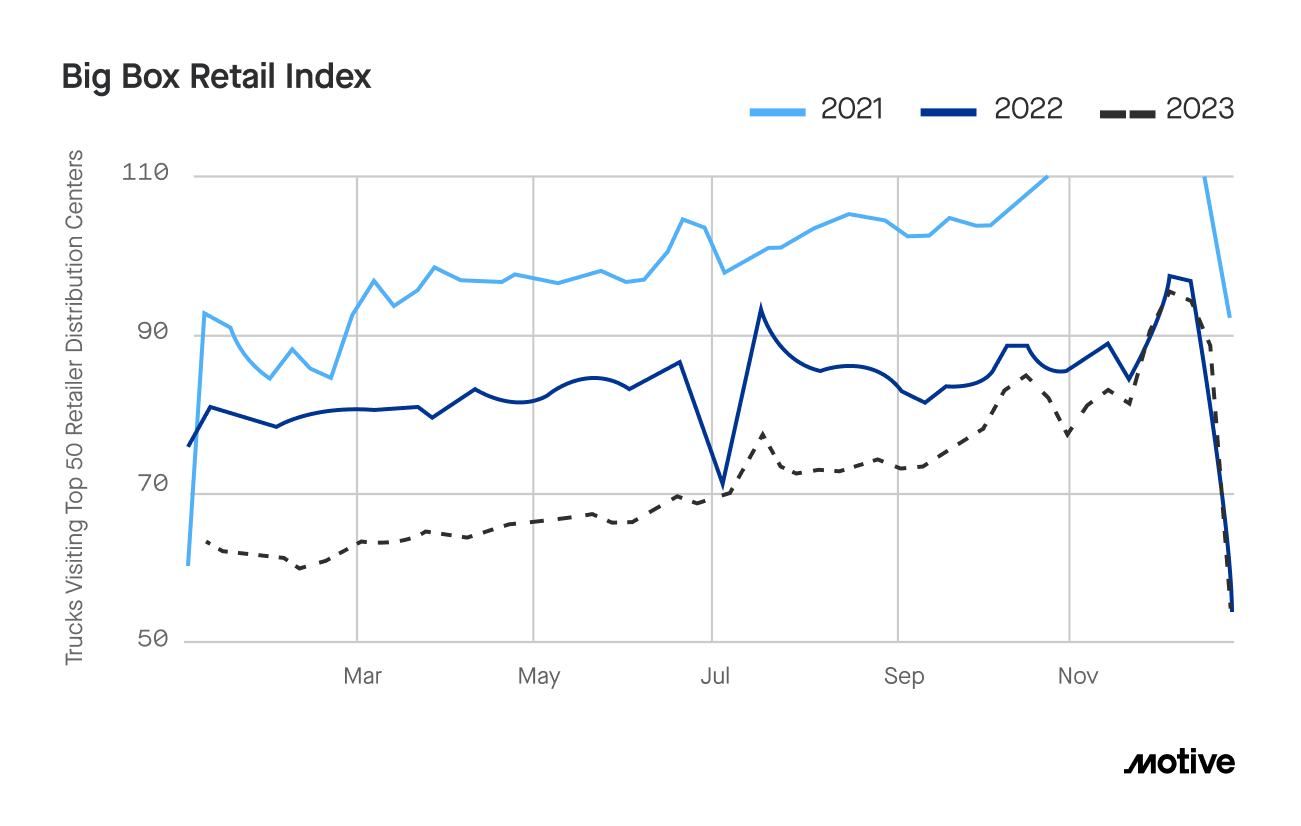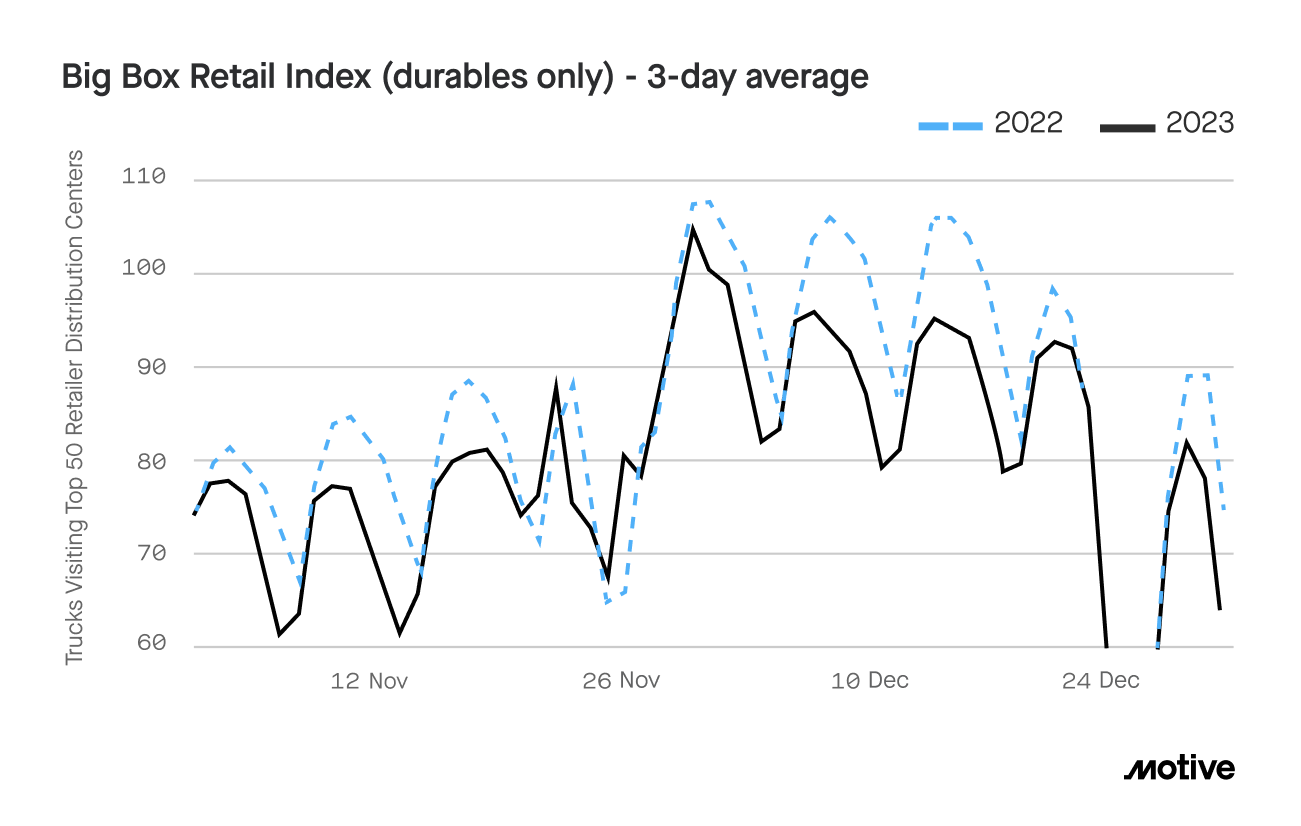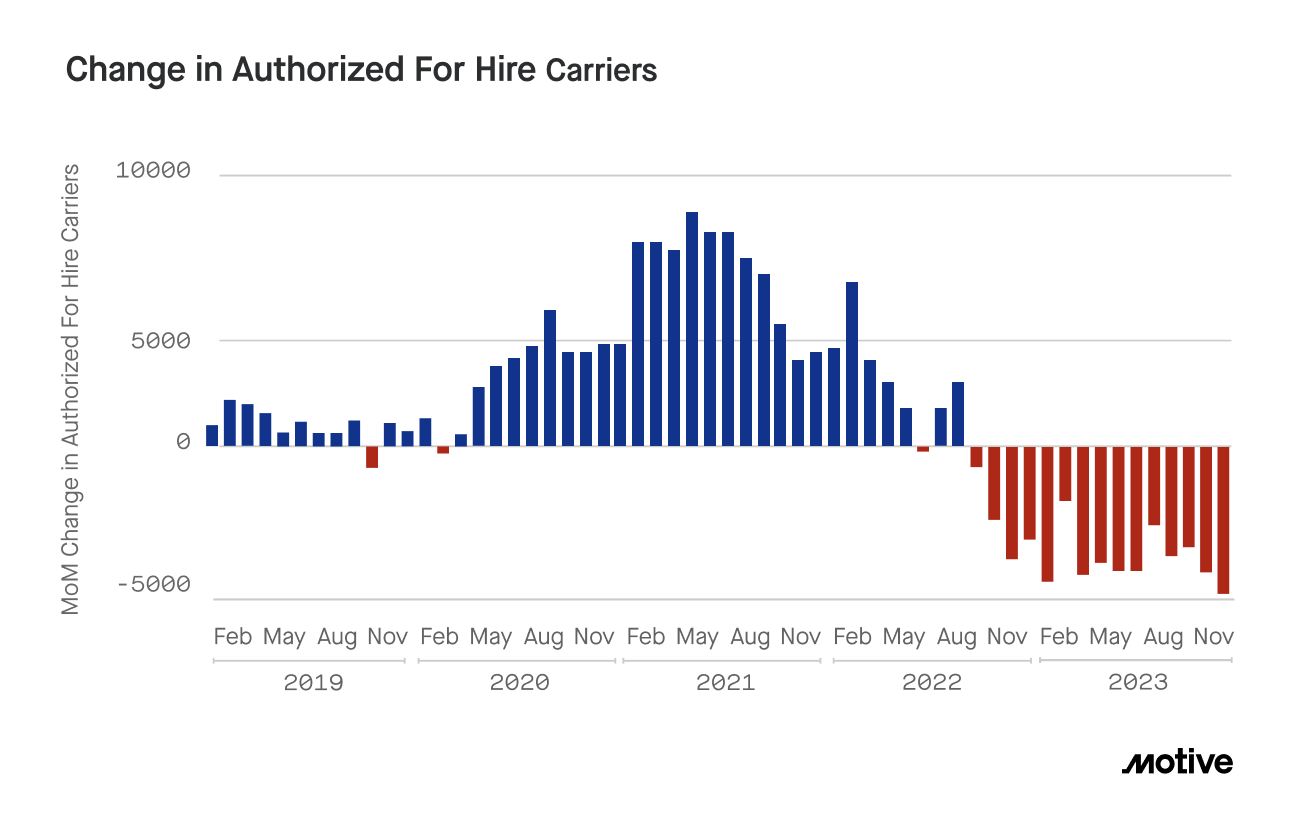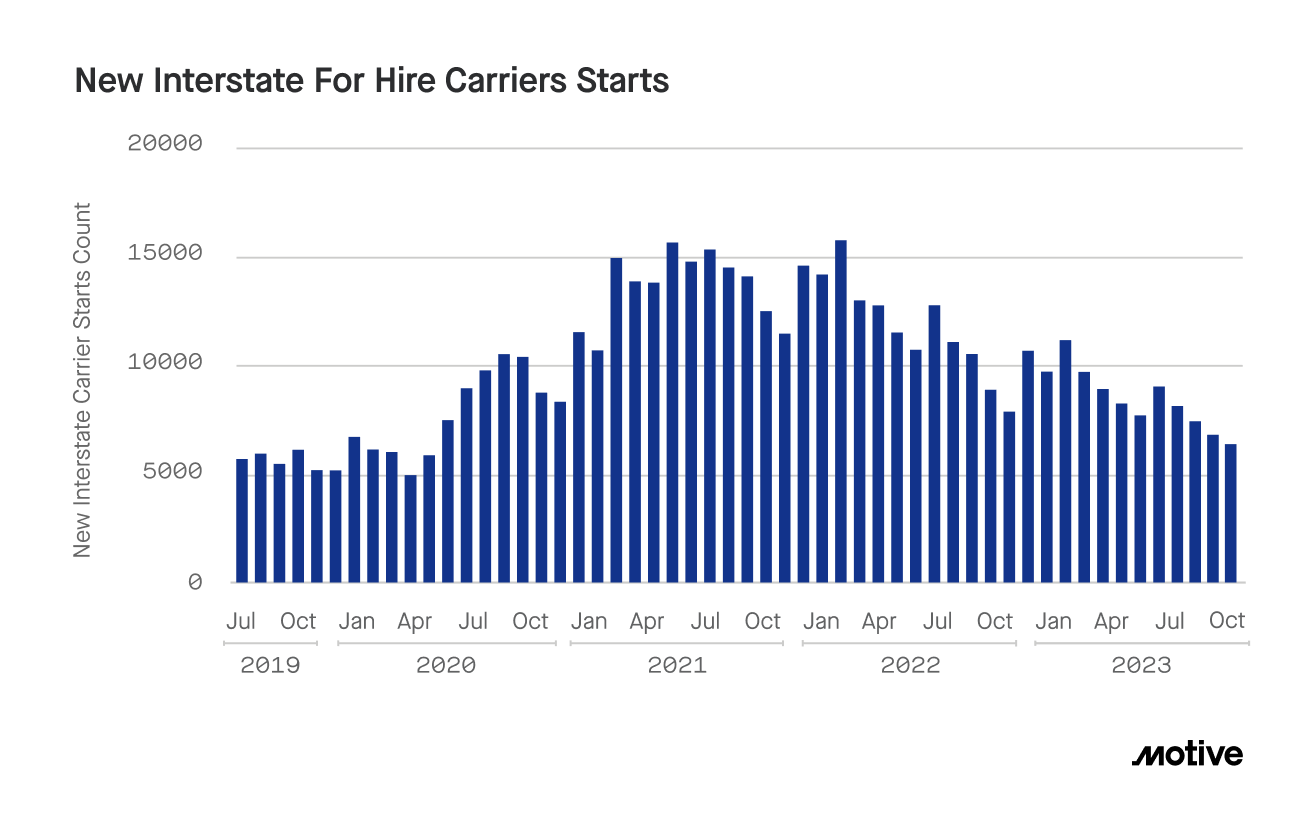Welcome to the first Motive Monthly Economic Report of 2024! What follows is an analysis of the major trends in the supply chain and economy across the Motive platform during the past month. Keep reading for a front-seat view into key factors currently influencing the U.S. economy.
Big picture: December brought a strong finish to retail warehouse visits and diesel prices continued to decline, but the trucking market’s overall contraction persisted.
- Retail warehouse visits peaked in December, concluding at levels nearly identical to those of 2022.
- Diesel prices continued to fall and some experts are forecasting less price volatility in 2024.
- However, the trucking market continued to contract, with December seeing the highest levels of carrier exits and the lowest number of new carrier registrations in 2023.
- Motive predicts that while the freight market will continue to contract in early 2024, stability will come in the second half of the year.
2024 may give the freight market a sense of the “new normal”
After three years of impacts from the pandemic and major external forces disrupting the freight market, 2024 may be the first time carriers will get a sense of what the new normal will look like. Retailers are re-stocking inventories again, potential interest rate cuts could mean better access to capital, and consumer demand could be less volatile if inflation keeps cooling. While we will likely continue to see overall contraction of the freight market, we expect that 2024 will be less volatile, creating more predictability in freight and inventory planning.
Holiday retail surge brings highest traffic of the year to warehouses, while diesel prices continue to decline
The December holiday shopping season saw the year’s highest levels of trucking visits to warehouses for the top 50 retailers in the US, as measured by Motive’s Big Box Retail Index. The index reached its peak at 96 during the first week of December and sustained a level less than 2% below that of 2022. Durable goods such as appliances, electronics, furniture, and other “hard goods” followed a similar pattern in peaking at 93.2, reflecting a 4.6% decrease compared to 2022.
Various factors contribute to consumer demand, but the rebound in warehouse visits during Q4 suggests that retailers are experiencing increased stability and adjusting their inventories accordingly. While it’s unlikely 2024 will mirror the trends of 2023 exactly, retailers might be gaining confidence in maintaining higher inventory levels, a shift from the destocking emphasis observed throughout much of the previous year.



Meanwhile, diesel prices continued to fall in December, dropping 4 cents to $4.14 per gallon. Several experts are predicting that drivers in general should see lower average prices at the pump and less volatility in 2024.

December marks the largest contraction in the trucking market in 2023, concluding a challenging year for the industry
December saw the highest level of carrier exits in 2023, with an estimated 4,860 trucking companies exiting the market. This represents a 52% increase in closures, compared to the annual average of 3,203 seen throughout 2023.
New carrier registrations also dropped for the fourth consecutive month, decreasing 4% month over month to 6,503. This latest decline marks an 18% year-over-year drop and a 43% decrease compared to December 2021 when consumer demand was at some of its highest levels.
While some of this decline is due to seasonality (as we noted in our December report), the year-end figures unequivocally conclude a challenging time for the trucking industry. However, it is worth noting that pre-pandemic in 2019 there were roughly 16,500 new carrier registrations, while 2023 saw 20.6% more registrations (20,700).


Motive’s prediction: While the freight market will continue to contract in early 2024, we will see stabilization in the second half of the year
We’ve previously shared that the freight market’s contraction will continue into early 2024, and we continue to hold this view. Our data suggests that 2024’s freight market will continue to be depressed compared to the previous 24-month cycle. However, we also see signs that the market may stabilize in the second half of the year. Similar to how consumer demand has been falling in line with pre-pandemic 10-year projections, we anticipate that by the middle of 2024 freight capacity will have adjusted accordingly. As stability approaches, it is crucial for both carriers and retailers to vigilantly monitor trends affecting logistics and supply chains. Maintaining flexibility will be key to seizing opportunities in what is anticipated to be a less volatile market in 2024.
Data Methodology
The Motive Monthly Economic Report uses aggregated and anonymized insights from the Motive network, as well as publicly available government data from the Federal Motor Carrier Safety Administration, U.S. Census, and U.S. Department of Transportation.








